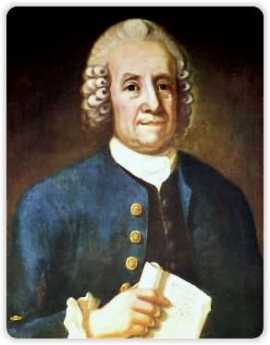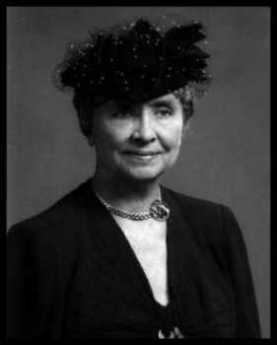Related Topics
No topics are associated with this blog
The Swedenborgian Choich

|
| Emanuel Swedenborg |
Among the many churches centered in Philadelphia, the Swedenborgian is probably the least typical and most difficult to understand. The church does not actively seek out a new membership, but it welcomes everyone, in the spirit of Emanuel Swedenborg's observation that "All people who live good lives, no matter what their religion, have a place in Heaven." Without attempting to define the teachings of Swedenborg (1699-1772), who was quite able to speak for himself, it can be approximated that Heaven plays a central role in this belief system, and predestination does not. Although the ceremonial features of this religion are very similar to the Episcopal Church, its main emphasis is on good works as a way of attaining the reward of Heaven. In some ways, that is an unexpected position for a noted scientist like Swedenborg to take, since generally scientists lean toward Calvinism, with the mechanistic view that if God is all-powerful, then human free will must be impossible.

|
| cross |
There are at least four divisions of the Swedenborgian religion, but the Bryn Athyn branch is most notable in the Philadelphia region. A very wealthy adherent of Swedenborg named John Pitcairn bought a large tract at Bryn Athyn and gathered the local church to live around a perfectly magnificent cathedral and church school. It is hard to think of any church in the Philadelphia region which approaches the magnificence of the Bryn Athyn cathedral. It has a special character that it was conceived and built during the crafts movement of the early twentieth century, with imported European workmen deliberately organized like medieval craft guilds. The central features of this workmanship reflect and then project the belief in personal individuality within the whole religion. No two windows, or doorknobs, or carvings are the same in the cathedral, reflecting the wish for each workman to devise his own unique creation and show the way of personal responsibility to the faithful. This cathedral is one of the things in the Philadelphia region most worth visiting, but to appreciate its quality you have to know what you are looking at.
Everybody in this church is unexpectedly hard to characterize. The Pitcairn Foundation was such a successful investor that it formed a mutual fund for others to share in its good fortune. Its central philosophy is to invest only in corporations which have been dominated by a single family, preferably the founding family, for at least fifteen years. There are about six hundred eligible corporations, and recent management scandals in the newspapers illustrate the Pitcairn's exactly knew the dangers of handing your assets over to a hired manager. This family-centered investing approach consistently yields better than the S & P 500, which in turn beats ninety percent of investment managers. You sort of get the idea you know where this family is coming from when you meet a courtly, meek, retiring but friendly person, who can say, "My mother is the only person I ever met who looked perfectly at home seated under a sixty-foot ceiling."

|
| Helen Keller |
Two other famous Swedenborgians illustrate the unusual individualism of this religion. Helen Keller, the deaf-blind girl who overcame her handicap by going to Radcliffe and becoming a successful author and lecturer, for one. The other would be Johnny Appleseed (1774-1845), whose real name was John Chapman. Grammar school legends would have this bearded, barefoot vegetarian adopting a life of poverty like St. Francis, but in fact, he was an extremely shrewd businessman who died rich. He developed the business plan that American settlers would be going West into what was then the Northwest Territory, and having a tough time getting enough to eat the first year or two. So, he anticipated the paths of frontier settlement, and went ahead among the Indian tribes, planting apple trees. When the settlers arrived in the region, he sold them young apple trees and showed them what to do with them. Apples grown from seed are not the tasty morsels we know today but tend to be rather shriveled and bitter. So Johnny showed them how you make cider, and if you let it sit around a while, hard cider. The settlers would use the pulpy squeezing for compost, and he would be back to collect the seeds from them so he could continue his business plan in the next county. In short, he showed them how to drink the apples. He also let the Indians pick the apples, so they liked him and spared him the common troubles of the frontier.
If you are going to boil apples, you need a pot, and Johnny often carried his like a hat. He wasn't a nut, at all, he was a showman. In his backpack, he was also carrying a Bible. And in his head, he carried a motto, "All religion has to do with life, and the life of religion is to do good."
Originally published: Wednesday, March 09, 2011; most-recently modified: Friday, May 31, 2019